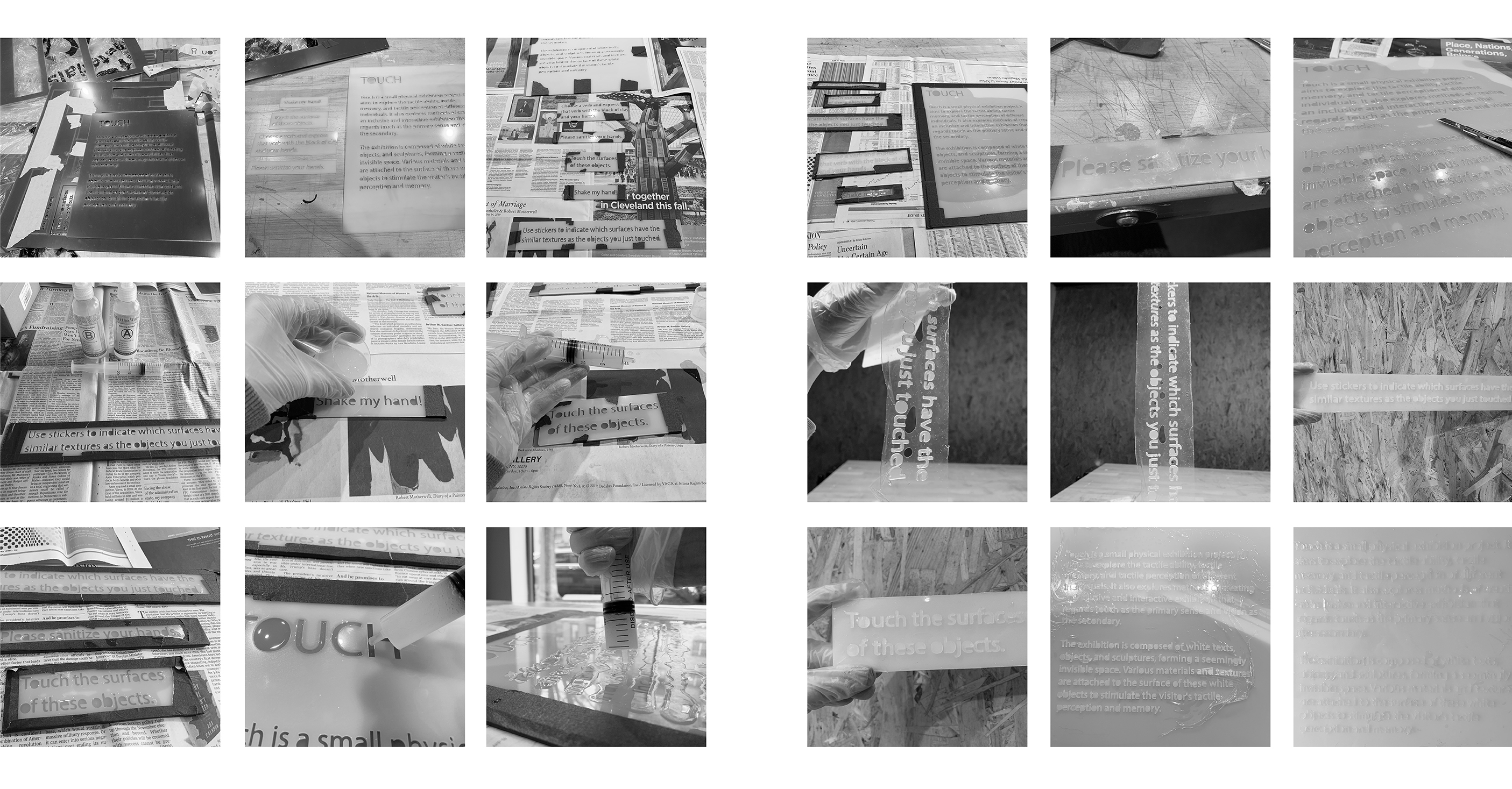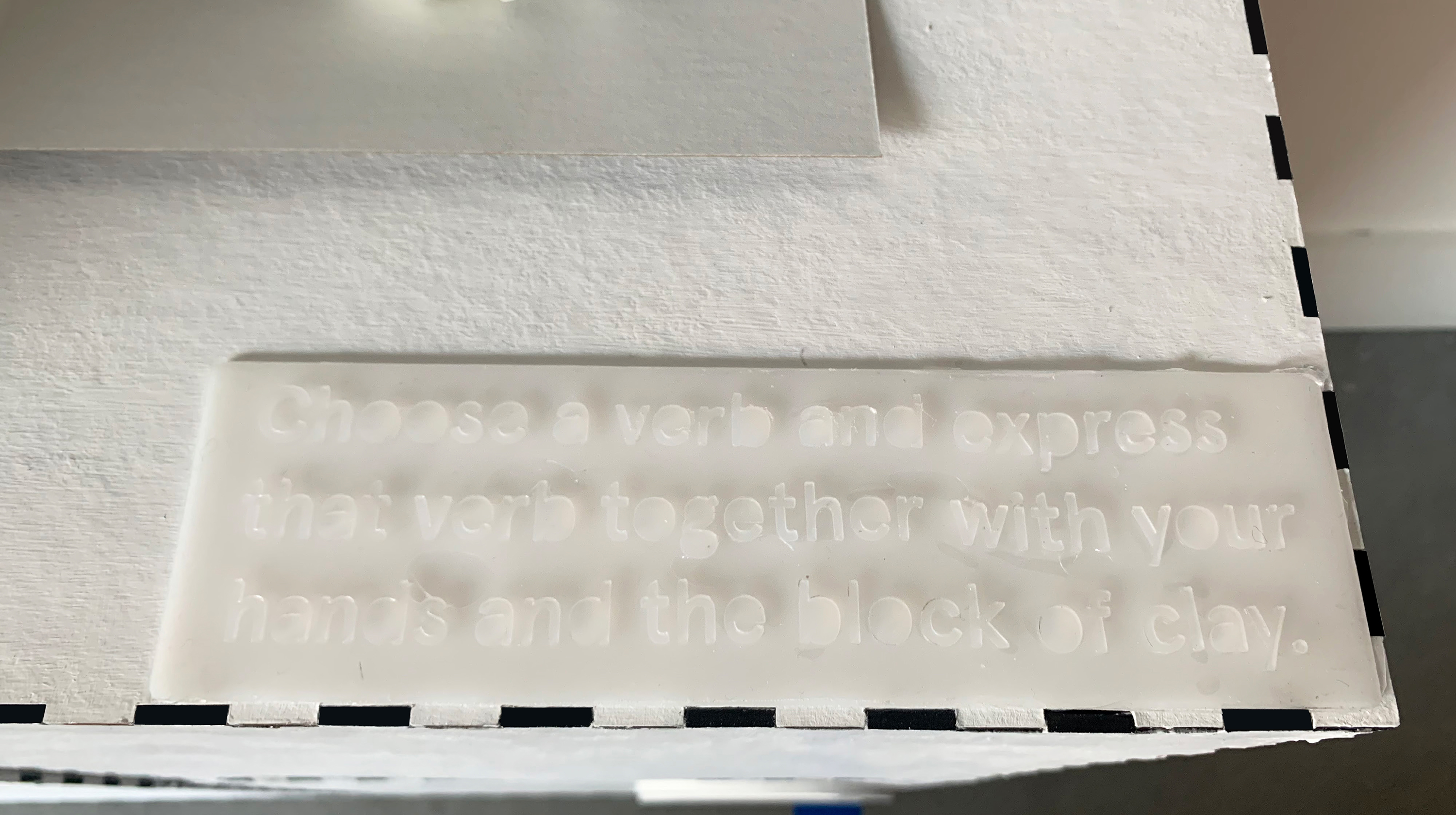
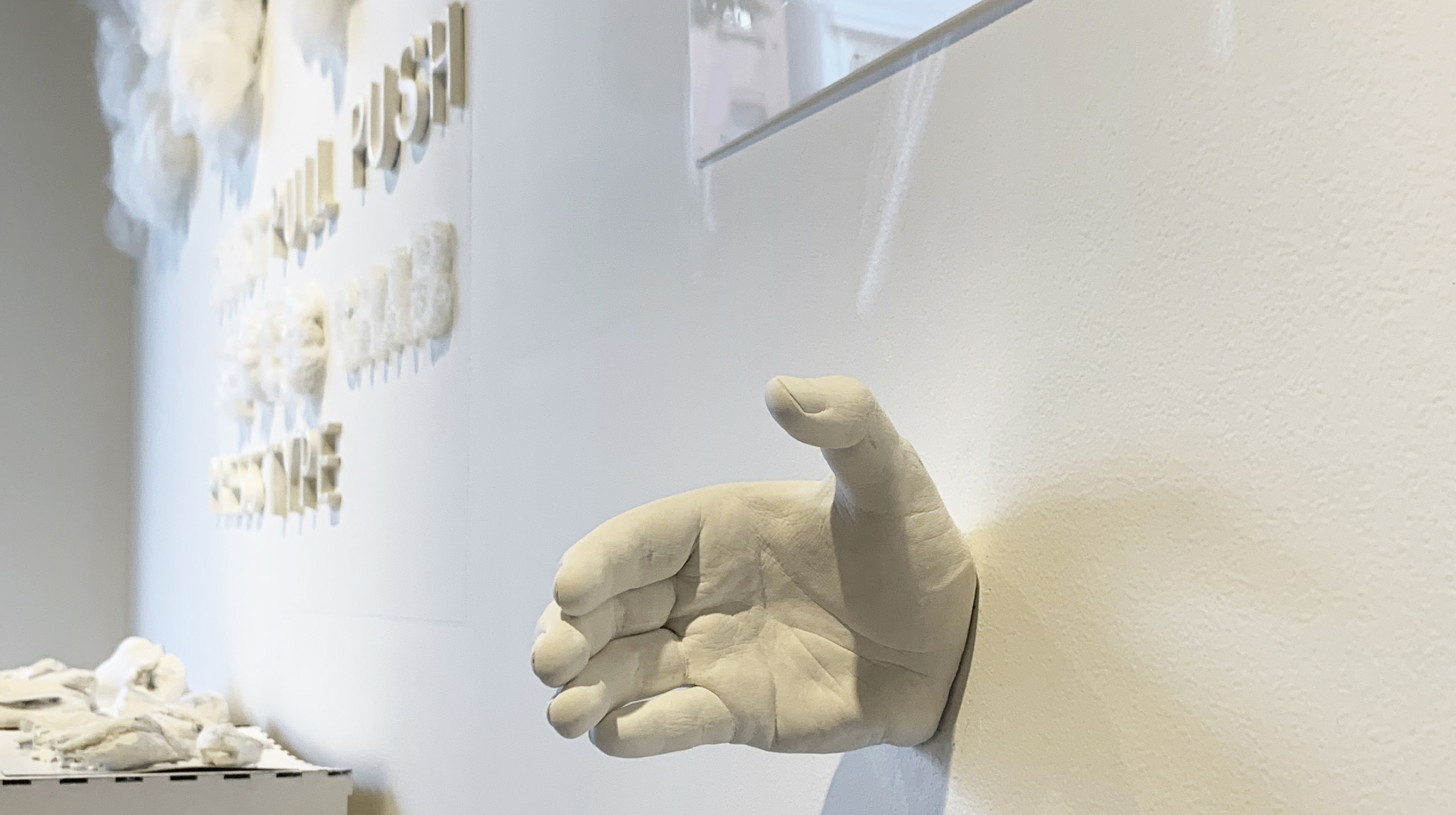
TOUCH is a prototype for a physical exhibition that explores the tactile capacities, memory, and sensory perceptions of diverse individuals. It also examines how to design inclusive and participatory exhibition experiences. It prioritizes touch as the primary mode of engagement and challenges the traditional dominance of vision in exhibition design.
▹ What methods can be employed to shift the predominant role of vision and elevate touch in design practice?
▹ How can we meaningfully reconnect people with the physical world in a post-pandemic era?
The exhibits comprise white texts, objects, and sculptures, forming a seemingly invisible realm. Various materials and textures are affixed to the surface of these white objects to stimulate the tactile perception and memory of the visitors.
The design of this exhibition is based on two preliminary research experiments: Taxonomy of Touch and Tactility of Everyday Objects.
︎Exhibition Interiors
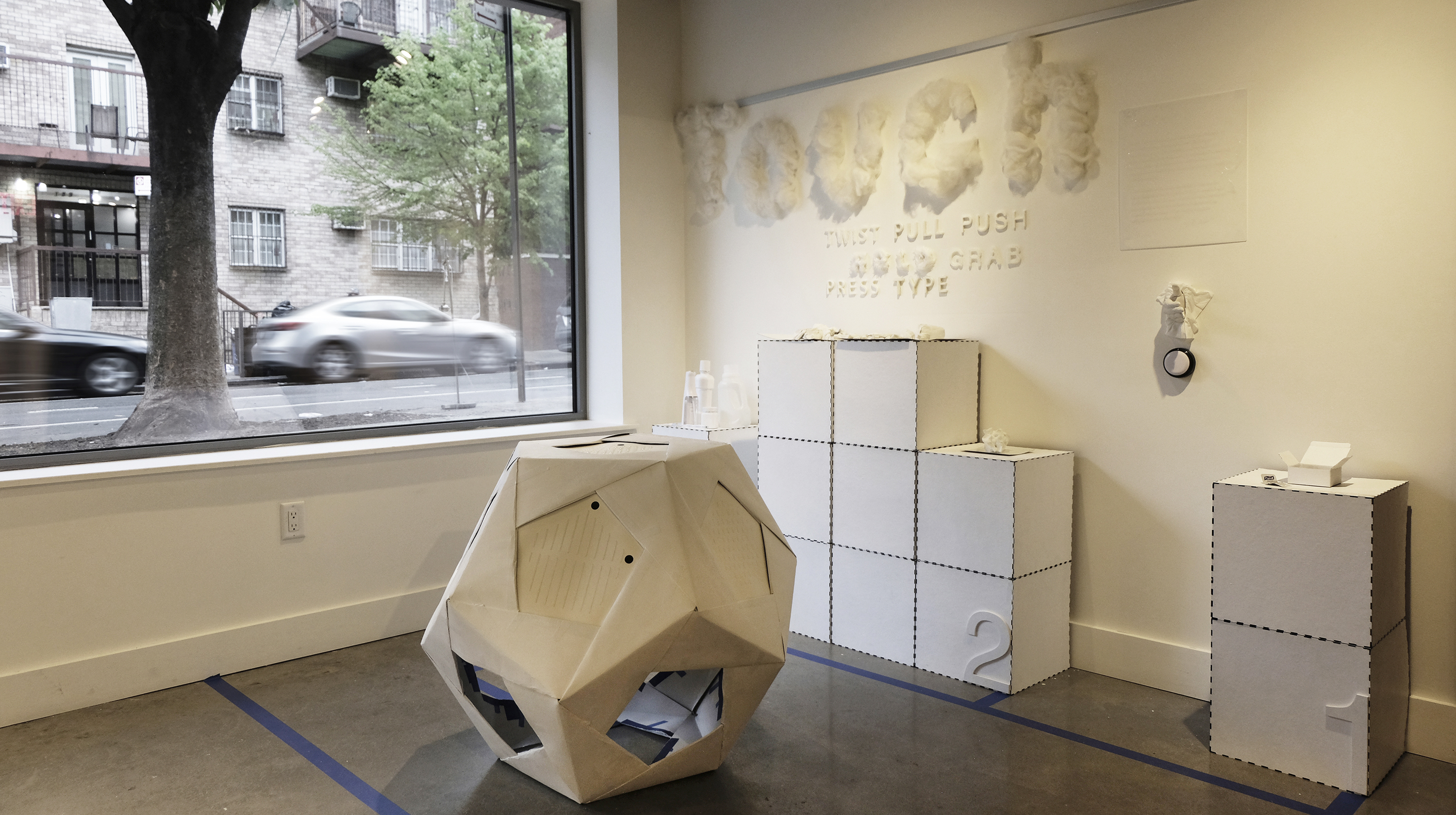
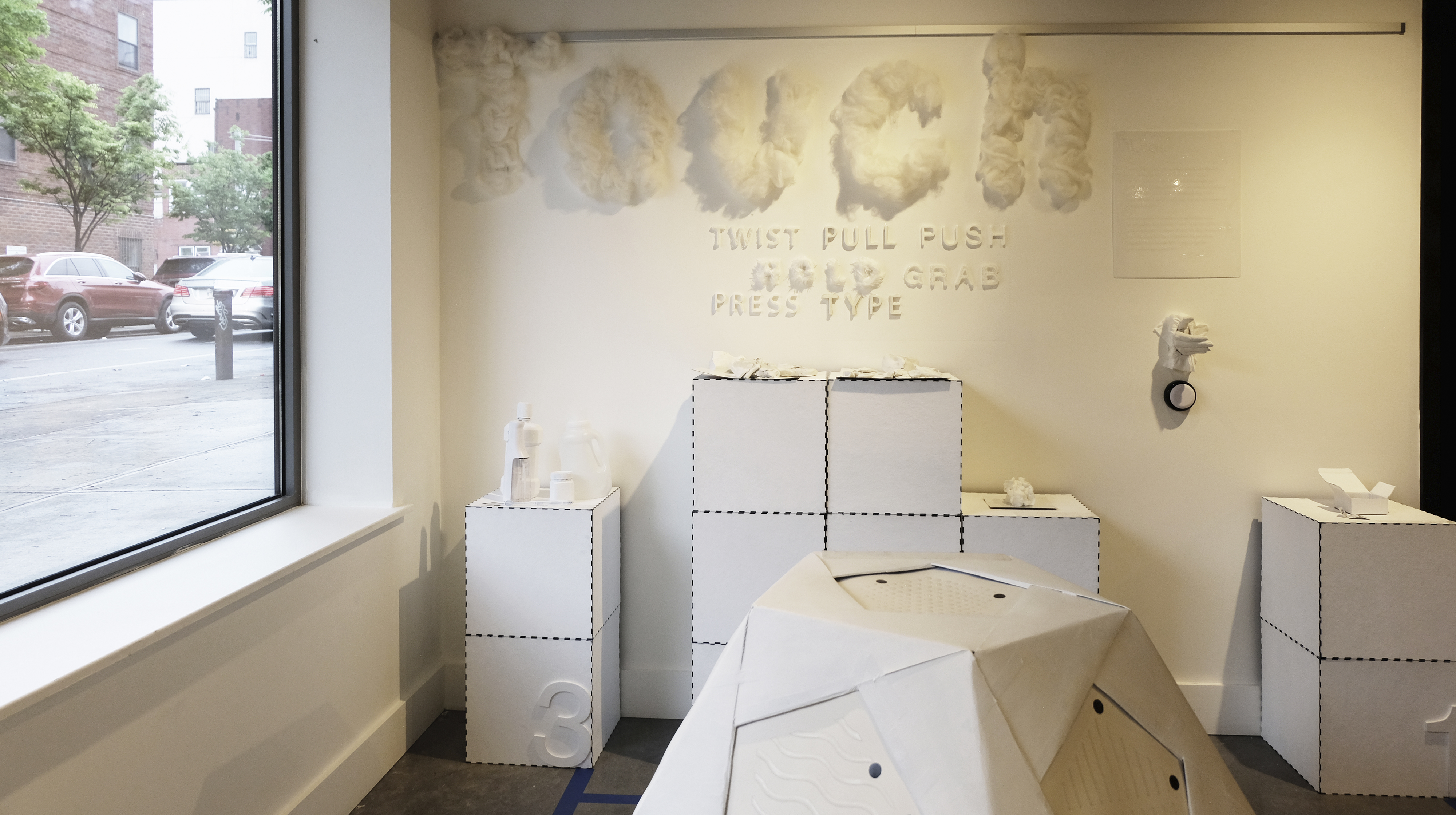
︎Exhibition Structure

Visiting Procedure
︎Section 1: Sanitize | Touch | Listen
Upon arrival at the exhibition, visitors are required to sanitize their hands using the provided portable hand sanitizers. Next, they will read the exhibition's introduction on the wall using their hands. Adjacent to the text lies a plaster replica of my hand, which visitors can shake as a way to respond to the current pandemic, and the fact that we are not able to touch each other's hands.
By pressing a white button on the wall, the exhibition information is also accessible through audio recordings.
Additionally, visitors have the option to wear disposable eye masks to enhance their experience of the exhibition.

︎Section 2: Touch | Think | Interact
The second part of the exhibition is centered on hand motions, featuring eight verbs representing various hand movements affixed to the wall. These verbs' surfaces are composed of diverse materials and textures, including wax, PVA glue, fur, and plastic.
Visitors are required to choose one verb and demonstrate their comprehension of the term by interacting with a block of clay.


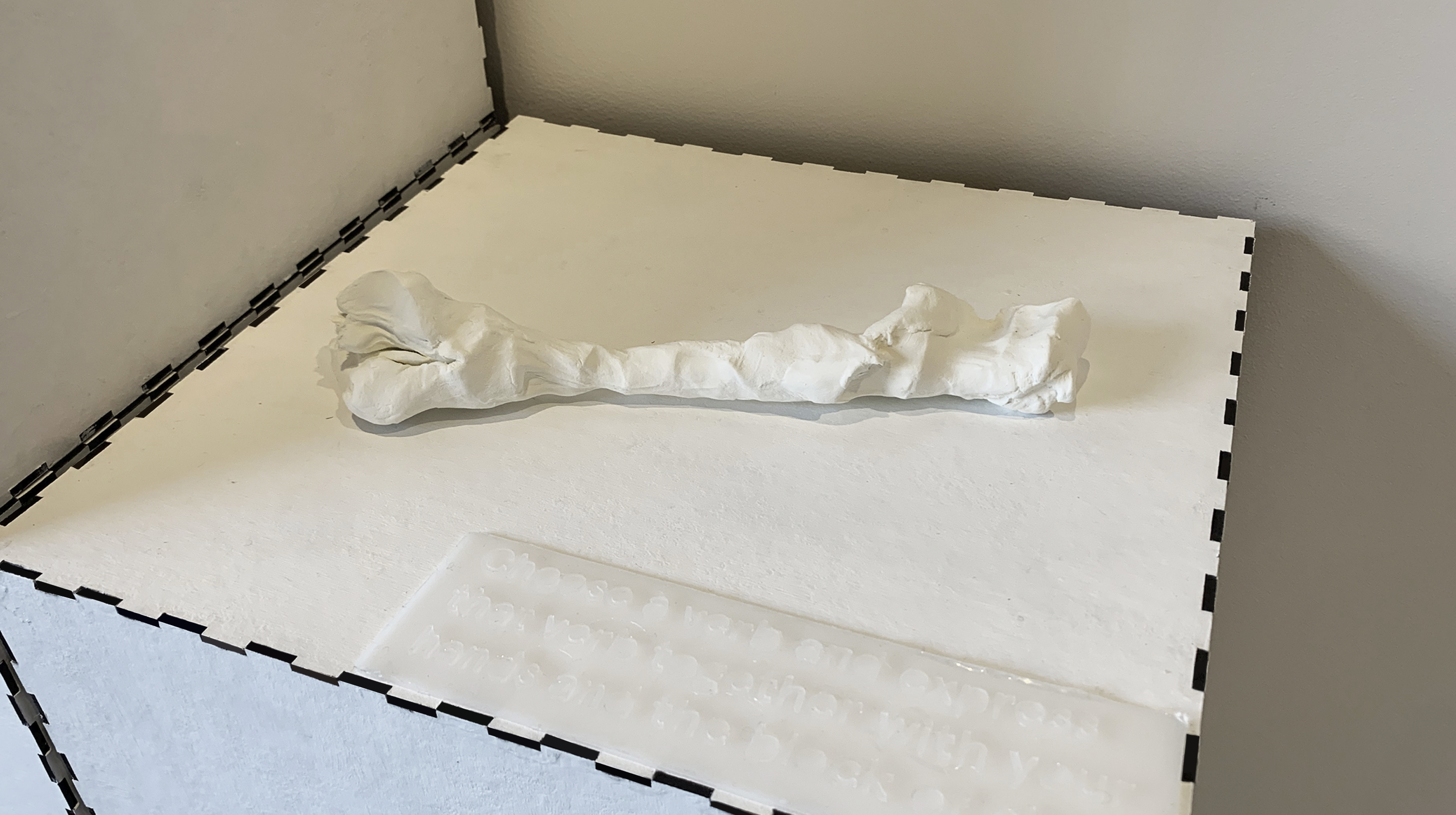
Section 3: Touch | Find | Memorize
The exhibition's last section prompts visitors to explore the surface textures of everyday objects, after which they proceed to a dodecahedron sculpture and employ stickers to mark which textures on the sculpture correspond with the objects they have just touched.
The surface textures of the dodecahedron and selected objects are based on the experiment: Tactility of Everyday Objects.

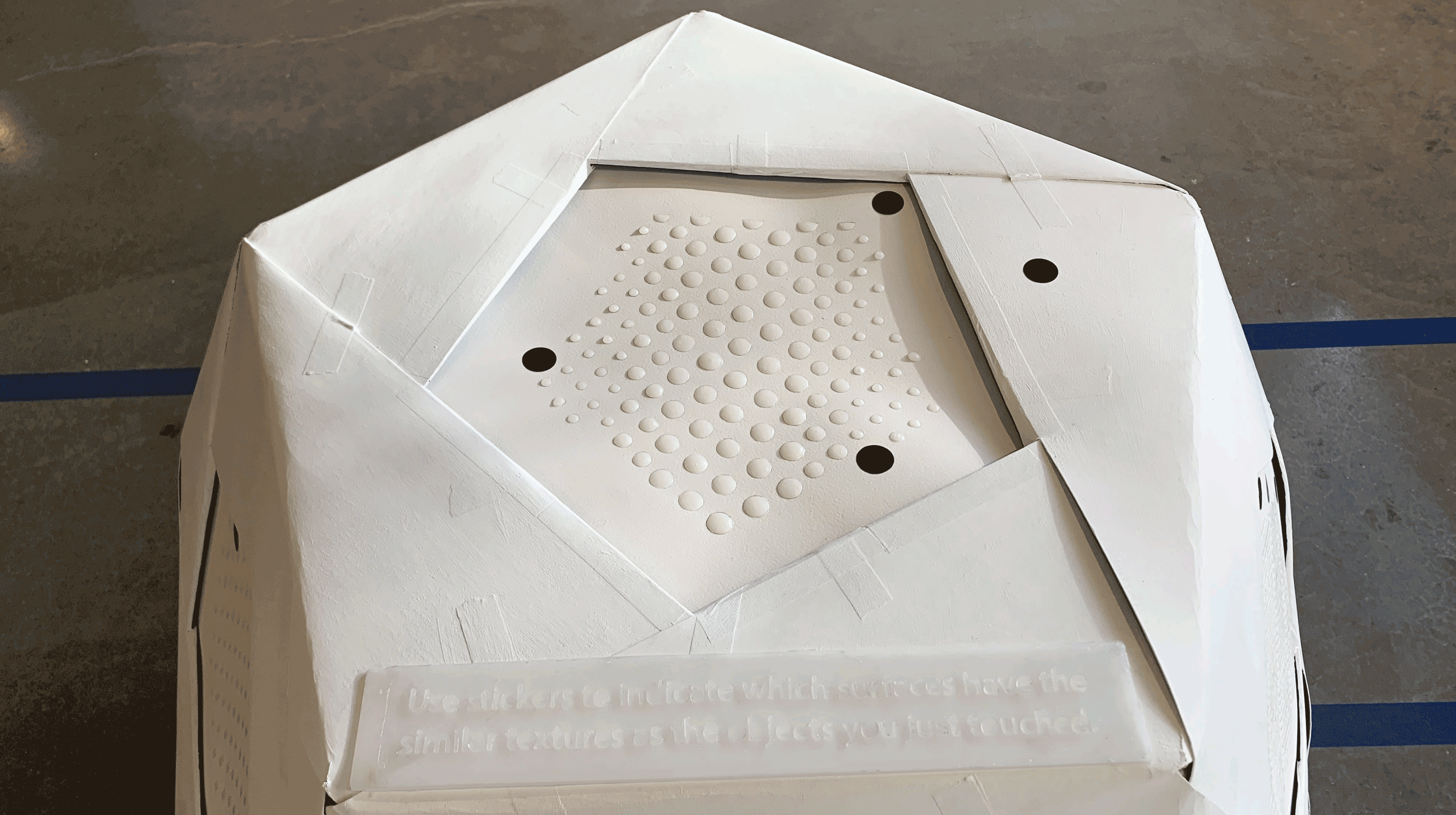
Surface design of the dodecahedron, based on pencil rubbings of different objects
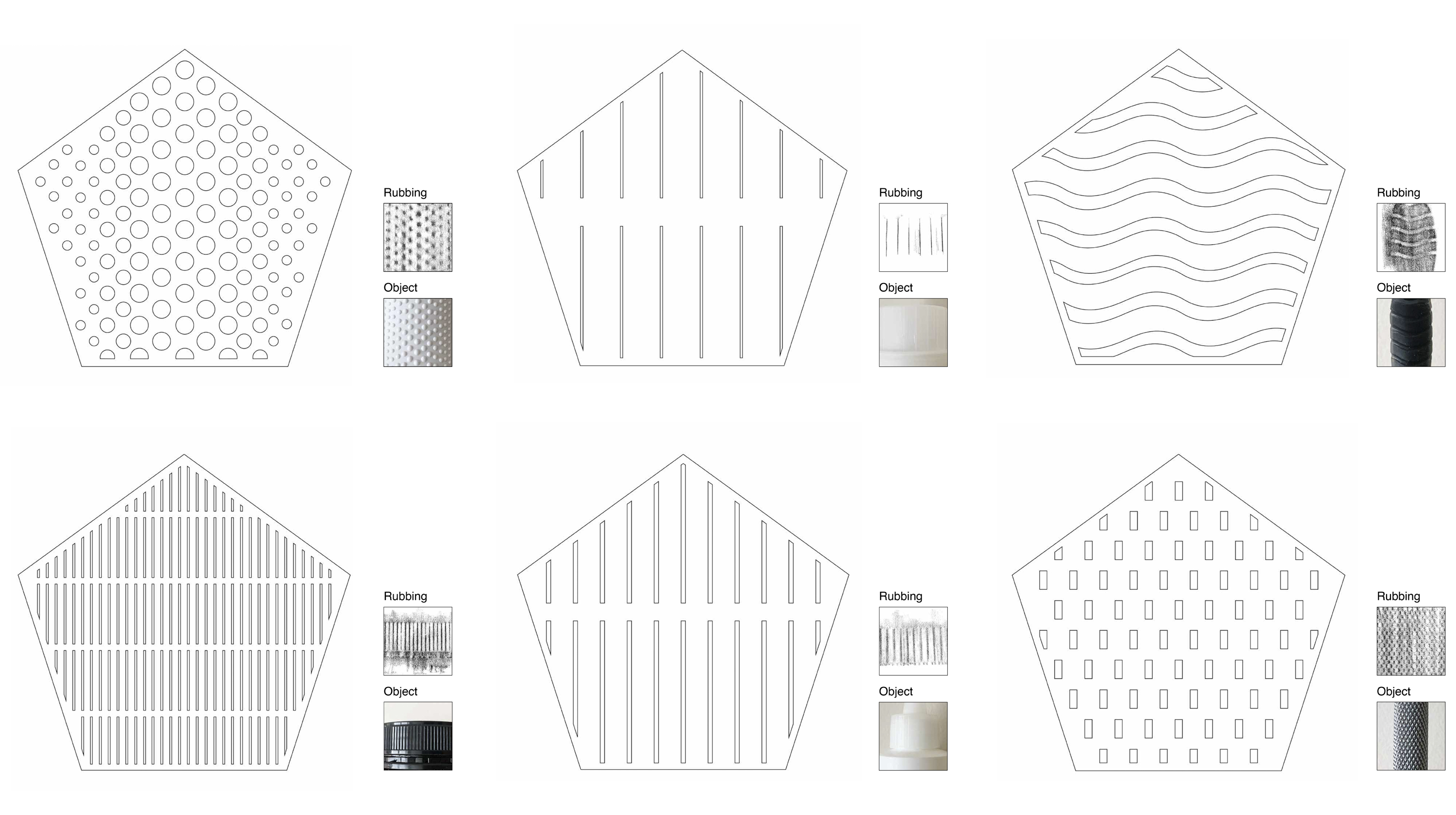
Interview and Documentation
︎Observe | Understand | Apply
In this project, visitors are not mere observers but also subjects of observation. Upon completing their visit, I conducted a brief interview with each participant to gain insight into their thoughts and feedback on each section.
Subsequently, I numbered each block of clay according to the experiment: Taxonomy of Touch.

Towards the exhibition's end, I utilized lightning powder and a fiberglass fingerprint brush to unveil the areas touched by visitors and document the hand interactions' traces.
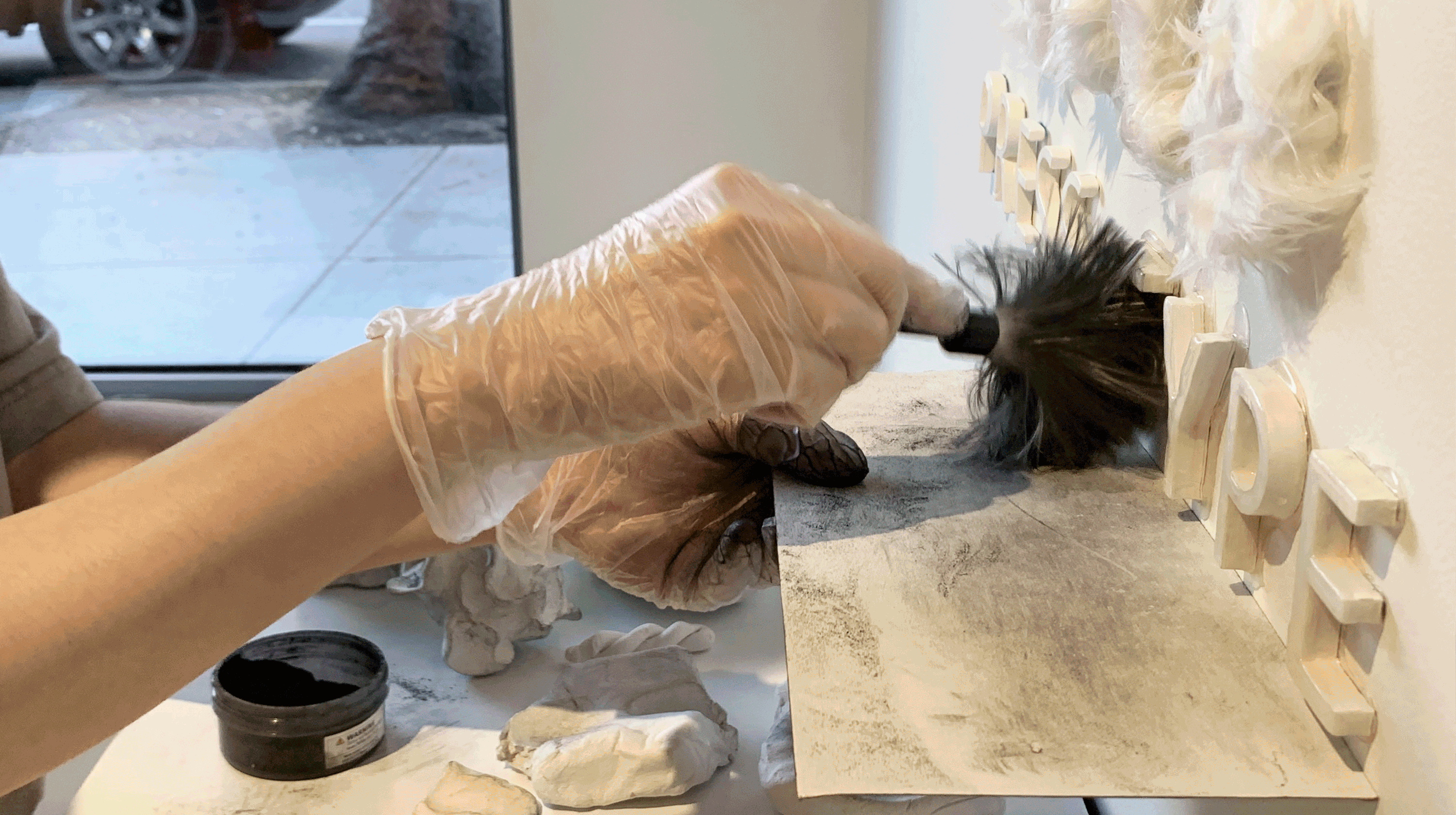


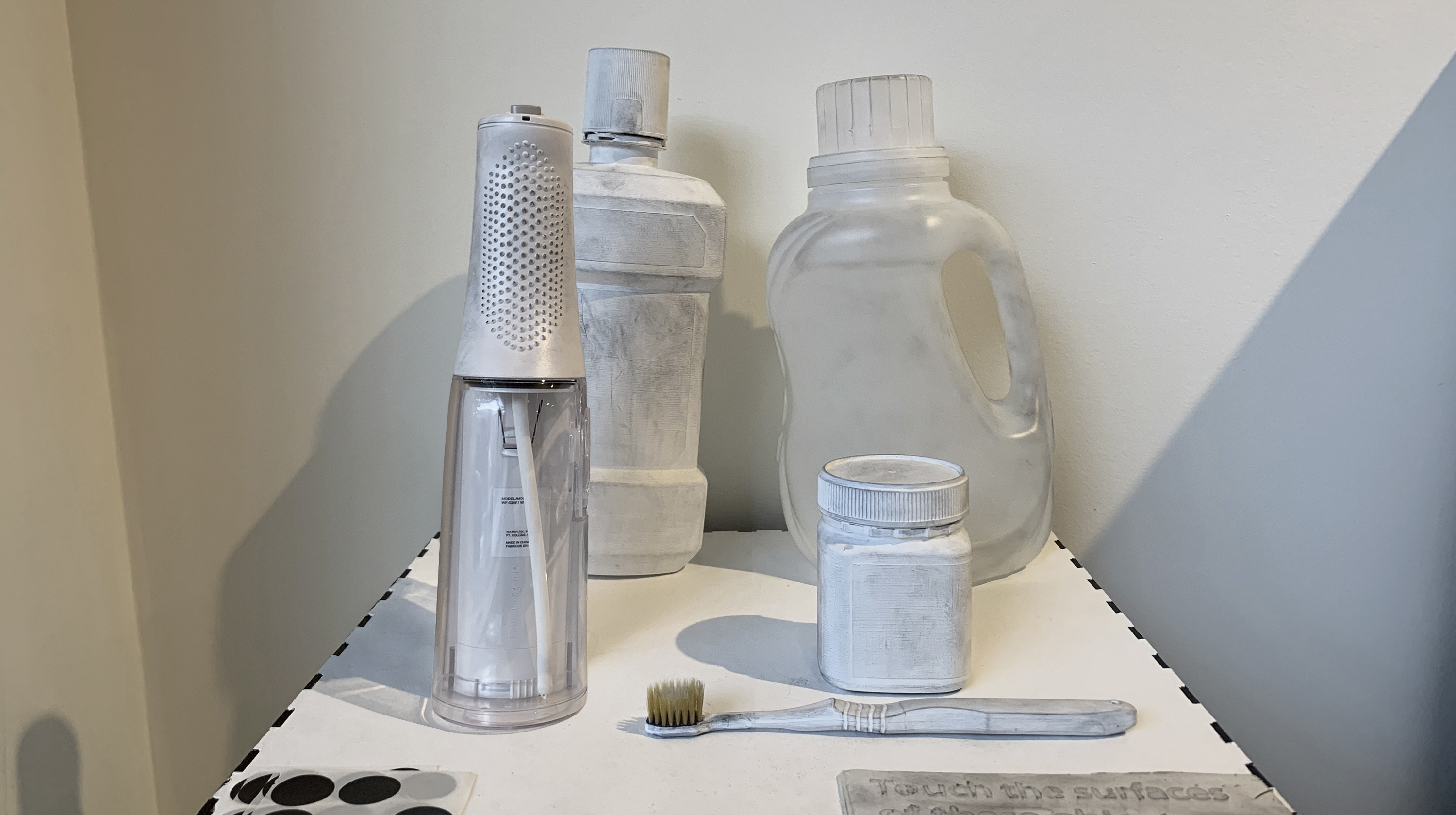
Making Process
︎Material Experimentations for Tactile Experiences
Physical materials and crafting methodologies play a critical role in my research. The following content and images showcase how I investigated the development of diverse tactile encounters using a range of materials and crafting techniques.
Wall Texts
Materials: chipboards, white acrylic paint, white furs, 3D printing pen, plastic, wool, and PVA glue.
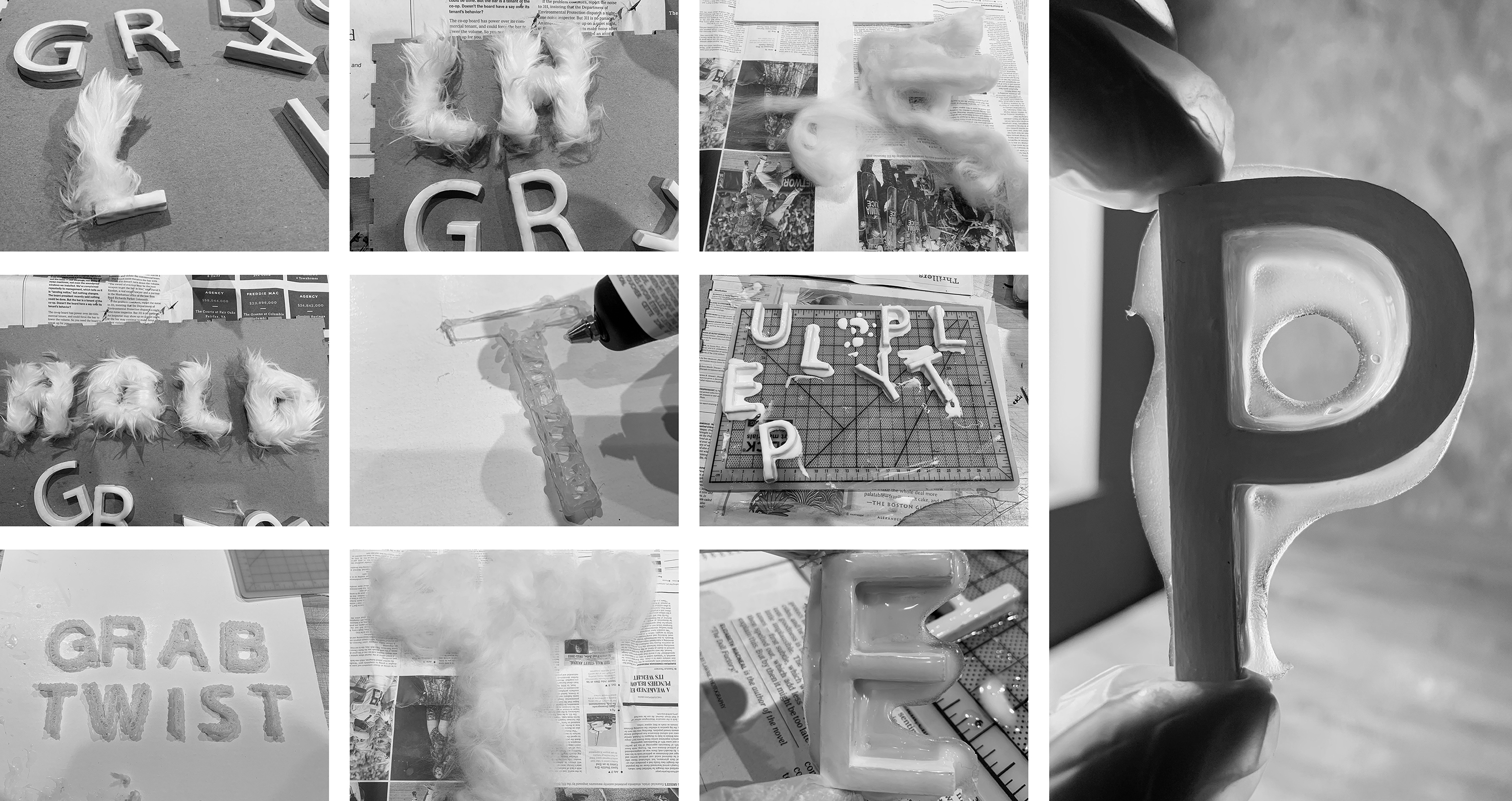
Materials:
▷ Round1: chipboards, natural soy wax, a pouring pot, and spoon;
▷ Round2: chipboards, white wax beads, a pouring pot, hot glue gun, hot glue sticks, silicone molding liquid, and spoon.
▷ Round2: chipboards, white wax beads, a pouring pot, hot glue gun, hot glue sticks, silicone molding liquid, and spoon.
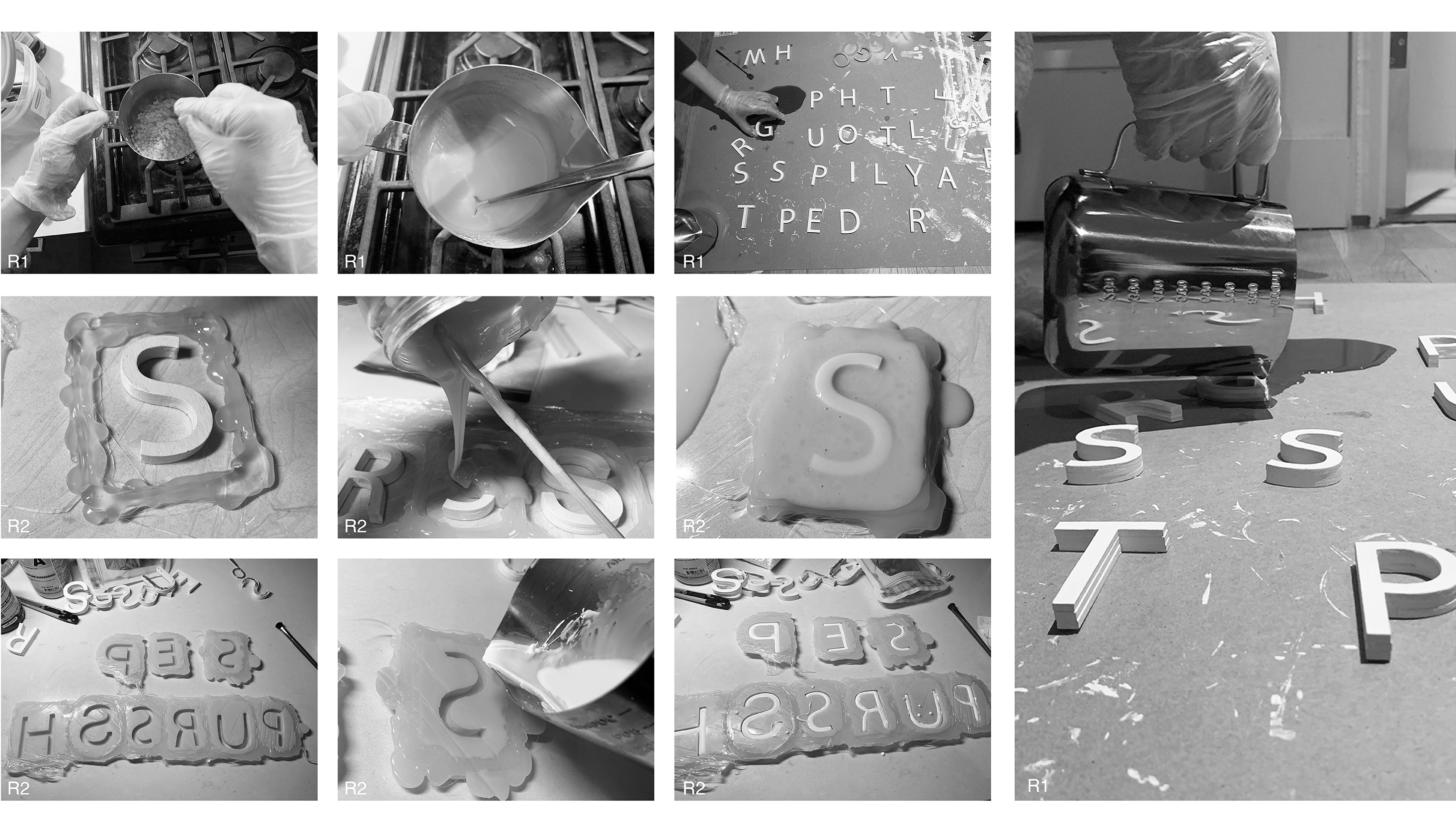
Dodecahedron Sculpture—Skeleton
Materials: white chipboards (thickness 0.02’’), steel ruler, pencil, cutting knife, sticky tape, and acrylic paint.

Dodecahedron Sculpture—Pentagon Surface Textures
Materials: laser-cut acrylic boards, watercolor paper, pencil, PVA glue, and needle.
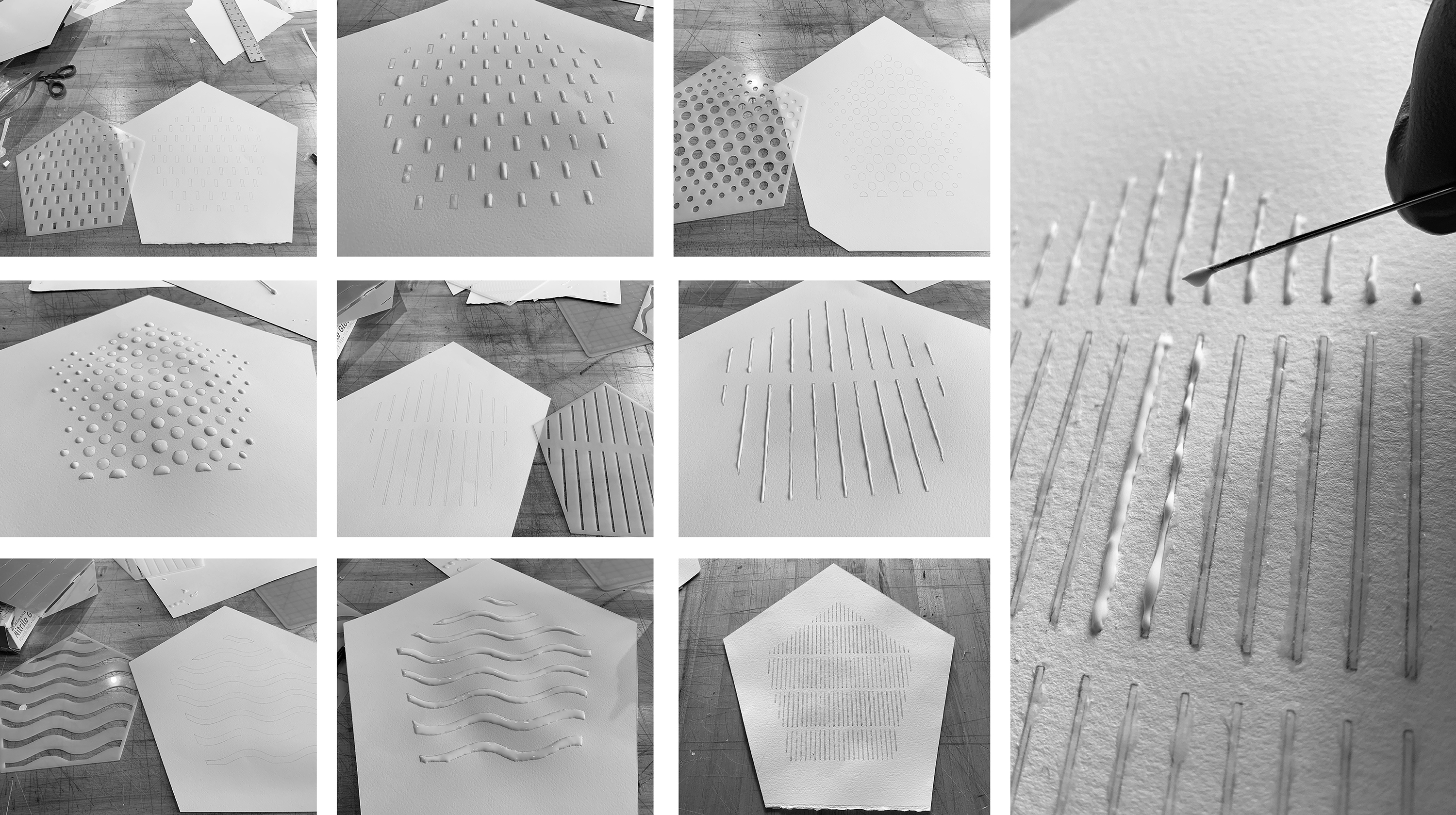
Tactile Labels
Materials: white acrylic boards, silicone rubber liquid, sticky tape, cutting knife, and a plastic syringe.
